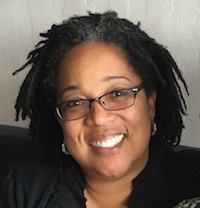
NAGPOT: Your Secret to Success in Graduate School
August 23, 2018
We are so excited to have Maria Dixon from Arizona State University as a guest author on our blog today! Maria is not only one of the funniest and smartest humans we know, she has tons of experience supervising university students and is sharing that wisdom with us today! Maria is passionate about working with young clinicians to help them develop into future SLPs. This post is a must read for any university student, or for those who supervise them!
NAGPOT: Your Secret to Success in Graduate School, by Maria V. Dixon, CCC-SLP
I have been a clinical supervisor in Speech-Language Pathology teaching graduate students for a long time. I enjoy watching their progress and successes throughout their clinical training. But, there is a one major peeve that I have with some graduate student clinicians’ performances because it can interfere with their progress and success. As new graduate students start their programs this Fall, I want them to know that there is a secret to success for your graduate school clinical practicum. The secret is mastering the ability to ‘show initiative,’ and the word NAGPOT is all that you have to remember.
First, what is initiative?
Initiative is defined as the ability to judge what needs to be done and take action, especially without suggestion from other people (1). As a Speech-Language Pathology graduate student in clinical practicum you are going to receive a lot of feedback from the clinic supervisor and often the most elusive is to ‘show initiative’. It may seem that your supervisor’s feedback to ‘show initiative’ has to be discovered solely by trial and error. It’s not that your supervisor is being purposefully unclear or that they enjoy the floundering of graduate students. Showing initiative is a skill as important to develop as the clinical methods and academic knowledge that you will be learning over the course of your graduate education. Moreover, developing initiative is a vital element in the critical thinking and problem-solving skills that Speech-Language Pathologists need every day in their careers.
Now, what is NAGPOT?
Learning to show initiative in graduate school starts with remembering the acronym NAGPOT. Use NAGPOT to help you ask your supervisor questions that are probing, show analysis and are based on evidence and reason. So before you ask your supervisor a question, check these sources:
Notes: Consult your notes from classes. Look in your notes from both undergraduate and graduate coursework to refresh your knowledge.
ASHA: Go to the ASHA website and check out the information on the Practice Portal and Information for SLPs sections.
Google: Search Google for basic information, but make sure to consider the validity of the information found by checking textbooks and journal articles.
Peers: Ask a peer. Pool your knowledge and collaborate to find information.
Observation: Look around the environment. Information that you are looking for may be posted or something that you can discern following your supervisor’s model.
Think about it: As simple as this seems, just taking time to pause and think about what you do know before asking a question is critical.
Using NAGPOT doesn’t take a lot of time, but is a major step in taking initiative. Using NAGPOT shows your supervisor that you are developing the skills that you are going to need as a Speech-Language Pathologist. But, more importantly, developing initiative by using NAGPOT leads to success for you as a graduate student and into your career as a Speech-Language Pathologist.
Maria
References: (1) Definition of “initiative” from the Cambridge Academic Content Dictionary © Cambridge University Press. Retrieved from https://dictionary.cambridge.org/us/dictionary/english/initiative
Resources: NAGPOT Handout
About the Author

Maria V. Dixon, M.A., CCC-SLP is a Clinical Associate Professor at Arizona State University. She has been a Speech-Language Pathologist (SLP) since 1997. She earned a Master’s degree in Speech-Language Pathology from the University of Maryland at College Park. She has worked as an SLP providing direct service in schools and as a Clinical Faculty member at Purdue University and the University of Maryland at College Park. Her areas of clinical and research interest include clinical supervision, intervention and research in Autism Spectrum Disorder, and bilingual language development. Maria is a fiber enthusiast; she knits, crochets, weaves and even spins her own yarn from natural fibers. She lives with her family, a dog named Twix and a cat named Topaz.



